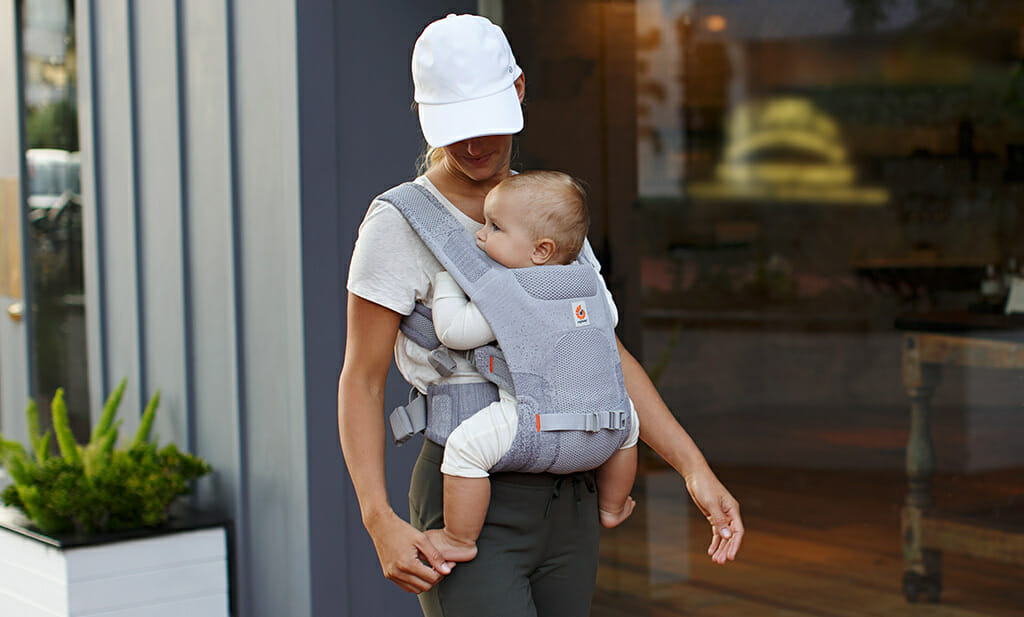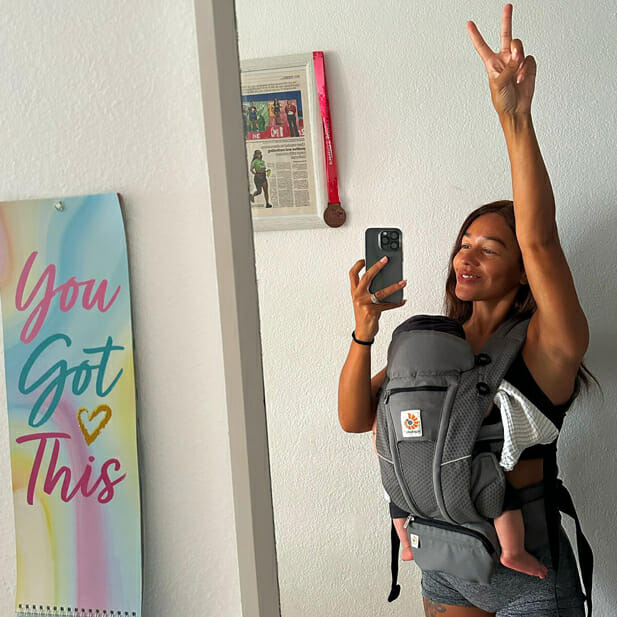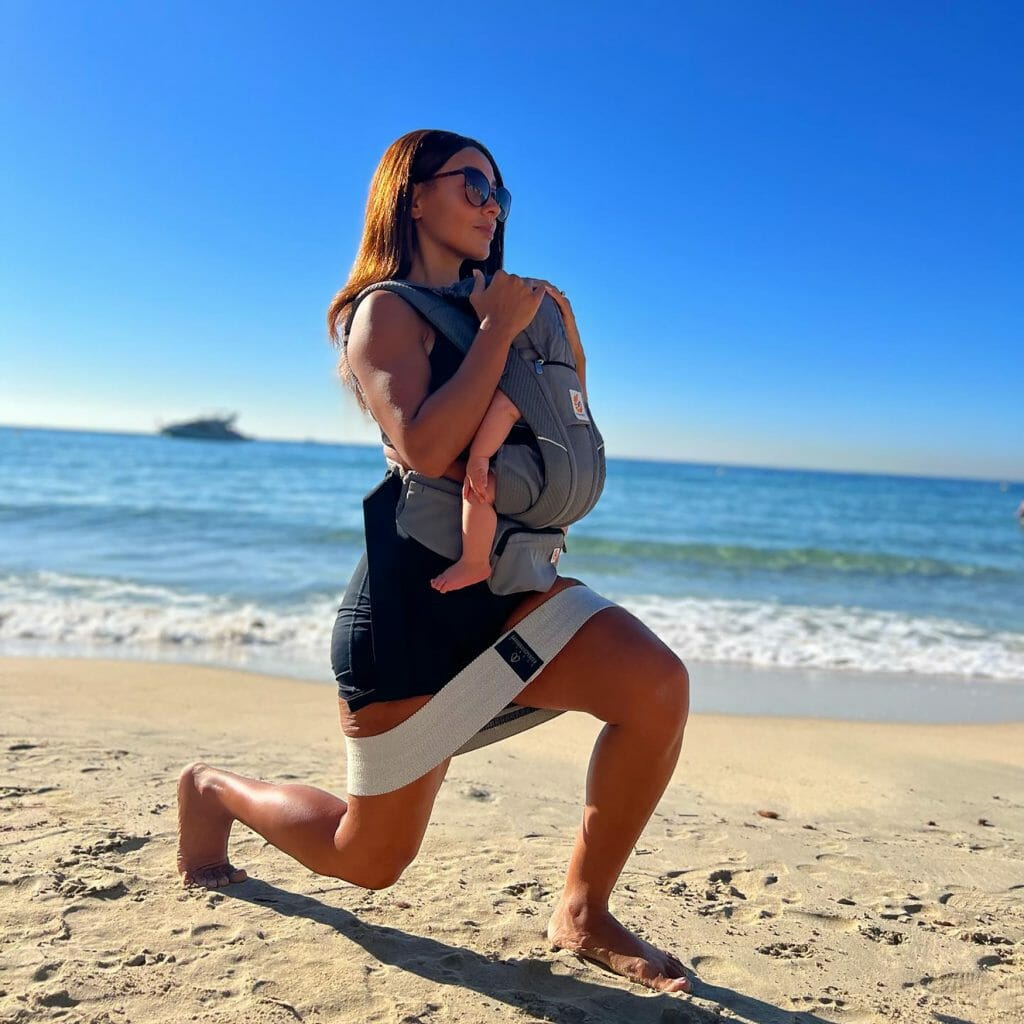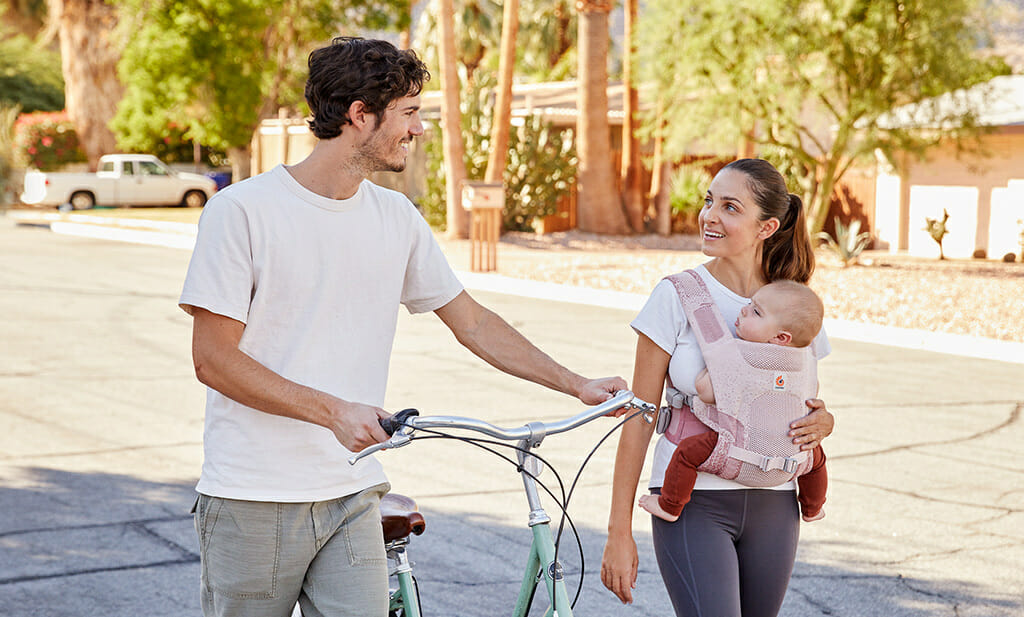
The new year has begun and naturally you may be thinking about what you want to achieve this year in terms of resolutions. Many of us have two main goals on our list: exercise, and healthy food choices.
Being physically active can support you in reducing the natural weight gained during pregnancy, develop brain health, reduce risk of disease, improve bone, and muscle quality and enhance your ability to do everyday activities. This is important as your little one begins to grow, becoming heavier and stronger, you will need the strength and energy to keep up with them.
Finding time to exercise can be challenging especially at the start of your parenting journey. When you are feeling tired, being active may seem like the last thing you want to do. Regular activity can relax you, keep you fit and help you feel more energetic. It can also help your body recover after childbirth and may help prevent postnatal depression.

Image credit: @savannahspencerfitpregnancy
The good news is you don’t need to spend hours in the gym to achieve your fitness goals. There are many ways to integrate exercise with your baby in your everyday life. Exercising with a baby carrier is a fantastic way to burn calories whilst keeping your little one close. It is also a suitable alternative in the winter when you can’t always get out and walk with the stroller.
Post natal exercise with your baby: When can you start?
Before you begin any form of post natal exercise after a vaginal birth, planned caesarean or unplanned caesarean, seek medical advice and gain permission from your GP, midwife or physio in order to start physical exercise.
Every birth and recovery is different, so it’s important to take an individualised approach and not run before you can walk.
When your body feels ready and you have been granted permission, start with light exercise and see how your body responds.
A 30 minute walk with your baby carrier or stroller can bring more movement into your everyday life. Once you get used to walking in your baby carrier or pushing your stroller, find a route with some inclines to make your walks increasingly challenging.
Maybe you have some NCT friends with whom you can do your outdoor walks together and find a lovely coffee shop along the way.
Top Tip: A gentle stretch throughout your body before excerising will activate your muscles and a slow stretch at the end of your routine will allow your muscles to recover.

Image credit: @savannahspencerfitpregnancy
Workouts with your baby: How to get started
Whether you are washing the dishes, brushing your teeth, taking a walk or anything in between, you can physically move with your baby, thanks to a carrier.
Baby-wearing is an amazing experience for both parents and babies. With some research, preparation and practice you can both enjoy your baby-wearing and exercise experience much more.
If you can, visit your local sling library or indpendent retailer and try on a few carriers to make an informed choice before you purchase the right carrier for you.
When choosing a baby carrier, it is important that your carrier is ergonomic and back-friendly.
Not only for you as the wearer, but also for your baby.Your baby’s weight should be evenly distributed across your hips and shoulders, and your baby should be in an M-sitting position.
All of our Ergobaby baby carriers are certified and recommended by Aktion Gesunder Rücken e.V. They support the back health of you and your baby. You can shop our carrier range here.
The first time you try your baby in their carrier before exercising, make sure that they are fed, clean and happy. Remember to stay calm. This may be difficult when you start something new, but practice makes perfect.
Follow the T.I.C.K.S rule for safe baby wearing to ensure your little one is positioned correctly:
T is for “Tight”
Your carrier should be tight enough to hug your baby close to you, as this will be most comfortable for you both. Any slack/loose fabric will allow your baby to slump down in the carrier which can hinder their breathing and pull on your back.
I is for “In View at All Times”
You should always be able to see your baby’s face by simply glancing down. The fabric of a carrier should not close around them so you have to open it to check on them. In a cradle position your baby should face upwards not be turned in towards your body.
C is for “Close Enough to Kiss”
Your baby’s head should be as close to your chin as is comfortable. By tipping your head forward you should be able to kiss your baby on the head or forehead.
K is for “Keep Chin Off the Chest”
A baby should never be curled so their chin is forced onto their chest, as this can restrict their breathing. Ensure there is always a space of at least a finger width under your baby’s chin.
S is for “Supported Back”
In an upright carry, a baby should be held comfortably close to the wearer, so their back is supported in its natural position and their tummy and chest are against you. If a sling is too loose, they can slump which can partially close their airway.
(This can be tested by placing a hand on your baby’s back and pressing gently – they should not uncurl or move closer to you.)
A baby in a cradle carry in a pouch or ring sling should be positioned carefully with their bottom in the deepest part, so the sling does not fold them in half pressing their chin to their chest.
If you would like to try some new activites, here are some options to get you and your little one moving safely, whilst having fun a meeting new like minded communities.
- Postnatal baby wearing classes: Exercise classes tailored for parents and babies is a great way of bonding with like minded people. For example, CARiFiT workouts are done whilst wearing the baby, offering new mothers the chance to get back into shape and connect with their baby. CARiFiT workouts are carefully structured to be safe yet results-driven, with constant consideration for the comfort and wellbeing of mum and baby.
CARiFiT postnatal classes offer both online and in studio workouts to suit your lifestyle. You can find more informaton here: https://www.carifit.co.uk/
- Do it like a kangaroo: Kangatraining is a complete workout during which both cardiovascular endurance/flexibility and muscular capacity/strength are enhanced. Unlike traditional exercise classes, new mums need not worry about finding a babysitter or minding an unsettled baby during class because their babies are worn on them and get to be part of the action. As well as the physical benefits, the opportunity to meet other local mums in a fun, relaxed environment boosts their emotional wellbeing.
- Workout with your stroller: Anyone who prefers to go out with a stroller can also do sports on the go. Buggy Fitness is a great way to meet other new mums whilst enjoying a tailored workout designed for postnatal mums and buggies. This class consists of power walking, hill pushing, short jogs for our more recovered mums and resistance exercises using body weight or bands.
- Exercise when your baby is asleep: If you are highly motivated and can incorporate it into your everyday life, there are various online courses that you can use to specifically strengthen your core and pelvic floor.
Make sure these online classes are certified for new parents, so you don’t overwhelm your body and focus on the right muscle groups.




